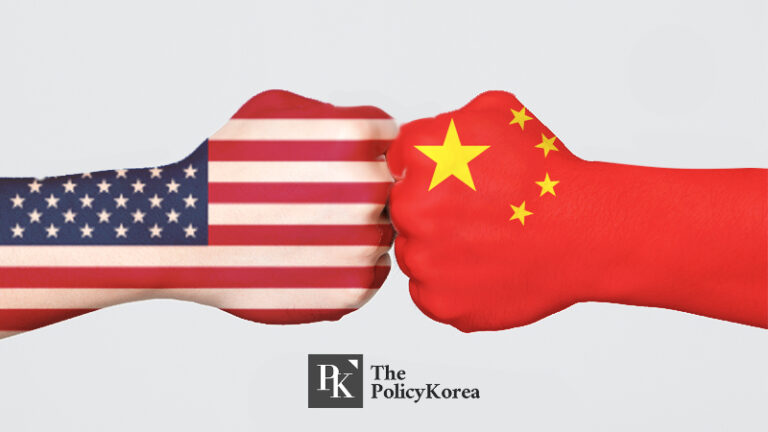China’s first-tier cities are suffering from overflowing unemployment, and the chances of economic recovery are ‘very low’
Workers have nowhere to go despite falling real estate prices Chinese government is ‘too cautious’ in market structure reform Credit defaulters have increased rapidly by 3% in the past three years

It has been revealed that China’s economic downturn is at a serious level. This is because large cities such as Shenzhen, which was once a symbol of rapid economic growth, are suffering from an overflow of homeless people. With most first-tier cities experiencing extreme turmoil due to large-scale population outflow and falling housing prices, some analysts predict that China’s economy will face an even bigger crisis this year.
Hundreds of workers left on the streets despite falling real estate prices
On the 8th (local time), Taiwanese media outlet Jayu Times cited a 7-minute video filmed in Shenzhen’s Longhua District and said, “As manufacturing plants in Shenzhen have successively relocated to Southeast Asia or Mexico, it has become difficult to maintain employment of 1,000 million people.” “It was reported. It is said that housing prices have also fallen by more than 50% due to population decline.
In the video introduced by the media, homeless people appear in various places in Longhua District, which is called the center of Shenzhen City. Chinese netizens emphasized that they are not alcohol or drug addicts, saying, “Most of these people are migrant workers, but they are sleeping on the streets because they lost their jobs.” There were also reactions expressing anxiety, such as “If the propaganda continues at this level, it will soon spread to the whole of China.”
In fact, the movement of foreign companies to leave China is hitting major Chinese cities. In December of last year, Bloomberg News said, “Although China has declared a re-opening (resumption of the economy), the decline in investment by foreign investors is still severe,” and “Although some companies with production bases in China have returned, there are companies considering additional investment.” “The situation is impossible to find,” he said.
As many workers lost their jobs, real estate also took a direct hit. According to local economic media Caixin, housing rents in China’s first-tier cities such as Shenzhen, Beijing, and Shanghai fell by an average of 13% on December 1 last year compared to December 2022. The explanation is that in the real estate market, where sales prices have fallen sharply, the volume of properties redirected to rentals has piled up, leading to a decline in prices.
The dark clouds hanging over the Chinese economy are not expected to go away this year. Earlier this month, the British media Guardian said, “Last year, problems with the Chinese economy worth $19 trillion (about 2 trillion won) were revealed,” and “including a sharp decline in the real estate market, high debt, low demand, stagnant productivity, politicization of regulations, and high “There are a lot of problems that need to be solved, such as youth unemployment,” he said.
He continued, “The Chinese government has announced tax and fee reductions for companies and expanded support for the real estate market, but as it is taking a cautious stance regarding currency and credit policies, the timing of market recovery cannot be guaranteed.” In addition, he predicted, “The Chinese economy urgently needs a strategy to reform its market and structure, but due to the government’s lack of will, serious imbalances will not be avoided as a result.”

Credit delinquency is on the rise, relief measures are close to ‘none’
Economic experts have interpreted that China is following in the footsteps of Korea, which paid a heavy price for its rapid economic growth. Korea suffered from the measles once between 2002 and 2006 due to the credit card crisis, which led to the creation of a large number of credit delinquents due to credit card deregulation and excessive consumption, and it is pointed out that a very similar movement has recently been observed in China.
According to the Taiwan Central News Agency, in December last year, the total number of adults (12 to 18 years old) across China who were unable to repay their debts and were listed as ‘financial debt defaulters’ was 59 million. This amounts to about 854% of all workers, and is a 1% surge compared to December 19 (2020 million people) when the COVID-12 pandemic began.
The problem is that in China, unlike Korea, the personal bankruptcy system is insufficient, making it difficult for those who default on their financial debt to recover their credit. China enacted and implemented the Corporate Bankruptcy Act in 2007 to support corporate rehabilitation after entering the market economy, but a window for credit recovery for individuals has not yet been established. Shenzhen is the only city that operates a personal bankruptcy system, but it is known that less than 30% of cases are approved for bankruptcy.
Liu Junhai, a professor at the Law School of Renmin University of China, said, “Restoring personal credit is important not only for those who are mired in debt, but also for their families and millions of small business owners, and it is also important for inheriting the entrepreneurial spirit pursued by the government.” “We need to find an effective way to help defaulters get back on their feet,” he emphasized.









 네이버계정으로 로그인하기
네이버계정으로 로그인하기
 카카오톡 계정으로 로그인하기
카카오톡 계정으로 로그인하기
